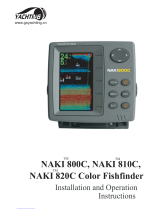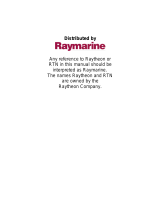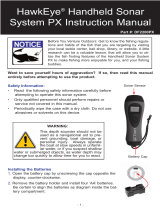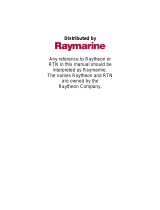
Fishnder 340C Owner’s Manual i
IntroductIon > About thIs MAnuAl
IntroductIon
Thank you for choosing the Garmin
®
Fishnder 340C. The
Fishnder 340C is a full-featured, color sonar that offers a choice
of display styles, a dual beam or dual frequency option, and many
more features, including the following:
• Ultrascroll
™
, which gives you a much faster update rate on
your Sonar Pages.
• Auto Gain, which allows you to see more sh and structures.
•
CANet
™
capability, which allows you to connect your unit
to CANet-capable Garmin chartplotters, so you can read the
Sonar Pages on chartplotters located elsewhere in the boat.
• Round asher, which gives you an option for how to view
the sonar.
• Whiteline, which helps you to interpret bottom hardness.
• 2x and 4x automatic and manual zoom.
• Adjustable keel offset.
• Alarms for sh size, shallow water, deep water, and low
battery.
• NMEA sonar data output and navigation data input.
About This Manual
To get the most out of your Fishnder 340C, read this manual and
learn the operating procedures. This manual includes the following:
• Introduction—contains the Table of Contents, product
registration, contact, and cleaning information.
• Getting Started
—provides general information that can
help you before you install and use your Fishnder 340C.
•
—covers the installation and
testing for the Fishnder 340C.
—provides details about the
features and operations of the Fishnder 340C.
• Appendix—contains information, such as specications,
optional accessories, and messages that might appear. You
can also nd warranty information in the Appendix.
• Index—helps you quickly nd information in this manual.
This manual uses the term Warning to indicate a potentially
hazardous situation, which, if not avoided, could result in death or
serious injury.
This manual uses the term to indicate a potentially
hazardous situation, which, if not avoided, may result in minor
injury or property damage. It may also be used without the symbol
to alert you to avoid unsafe practices.
























